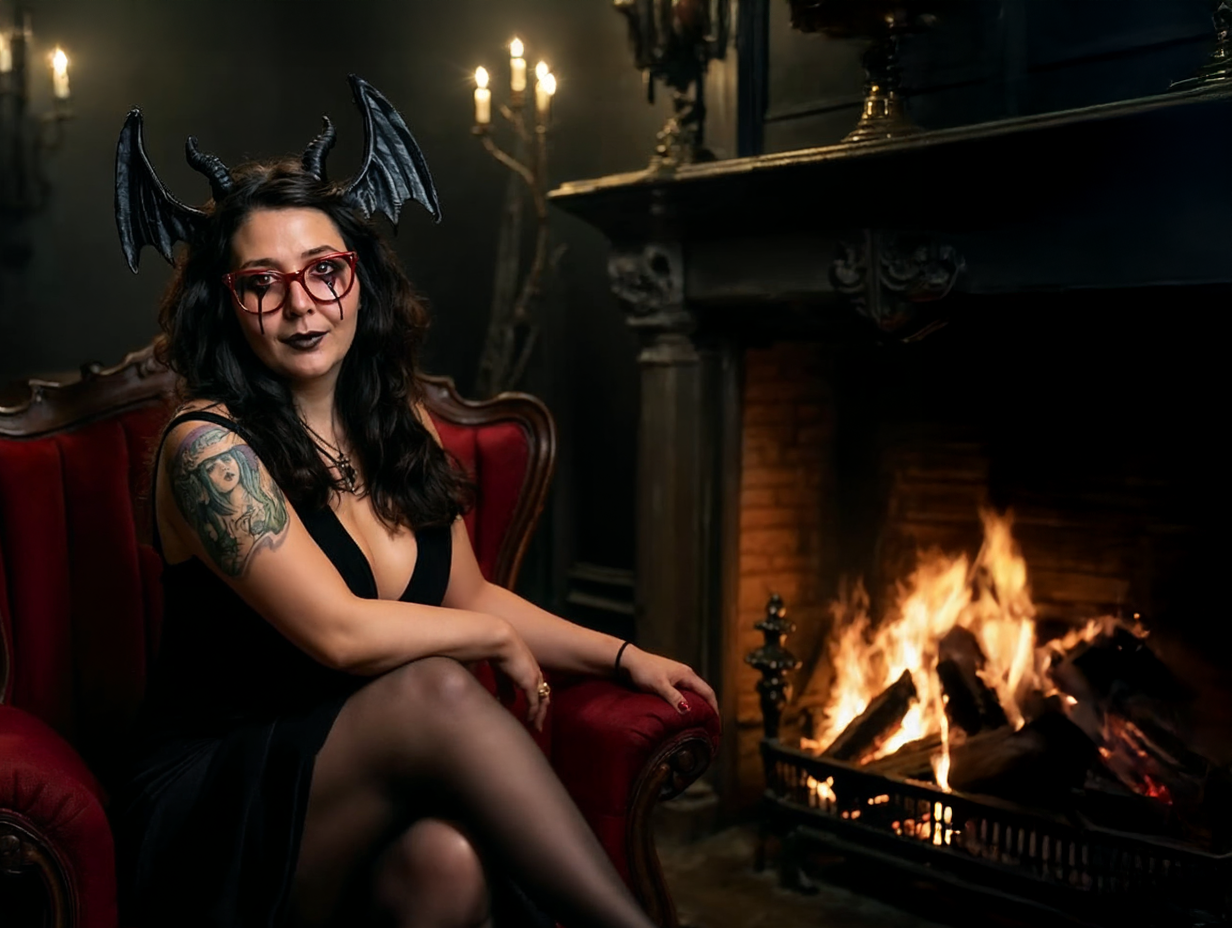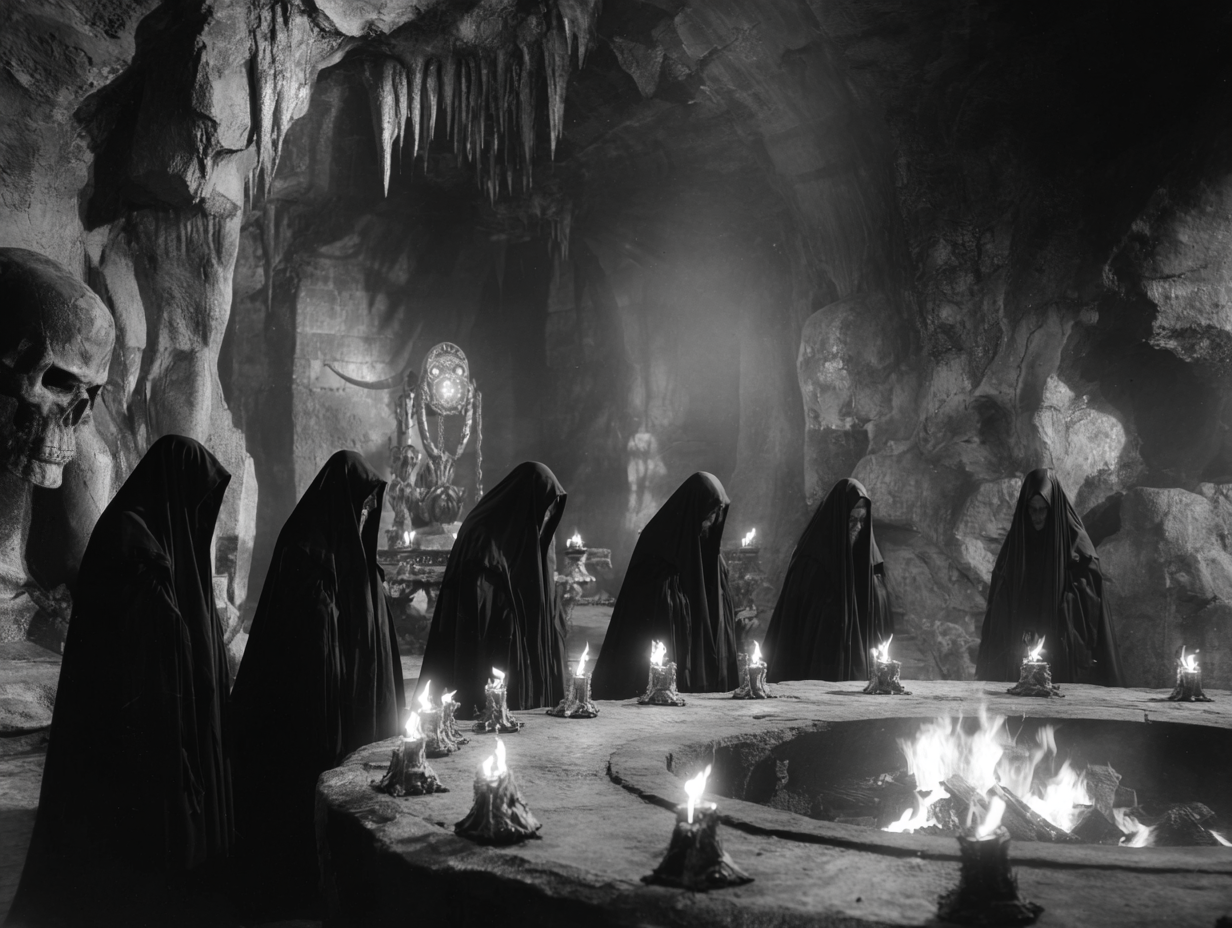
Manorcreep Pictures is a legendary horror film production studio founded in the early 20th century, widely regarded as one of the “Big Three” studios of the Golden Age of monster cinema, alongside Shiver Studios and Necro Brothers Entertainment. Known for its lavish sets, opulent creature effects, and signature “Aristocratic Monster Goth” style, Manorcreep was the birthplace of some of the most iconic (and now mostly vanished) movie monsters in cinematic history.
Manorcreep’s vaults, destroyed by fire, were rumored to house dozens if not hundreds of lost reels, many of which have resurfaced under the Scream Unreels restoration initiative, often under mysterious and controversial circumstances.
⸻

Overview
• Studio Name: Manorcreep Pictures
• Founded: 1919 (unconfirmed)
• Founder: Percival Thatchwick III
• Location: Blackvale, Massachusetts (allegedly cursed grounds)
• Motto: “Semel monstrum, semper monstrum”
• House Genre: Classic Movie Monsters, "House of Skelpire," Aristocratic Gothic "eat the rich in reverse" motifs
Known For:
• Elaborate, candlelit mansion sets
• Movie monsters that scared your great grandmother
• Deep psychological horror - not for the audience but for the crew
• The Manocreep fire
• The infamous “Manocreep Clause” in actor contracts (see below)
⸻

History
Origins (1919–1934)
The origins of Manorcreep Pictures are shrouded in mystery. The studio’s founding is attributed to Percival Thatchwick III, a reclusive and notoriously dour aristocrat with rumored ties to secret societies and an obsession with monsters. Records indicate that for all intents and purposes, Thatchwick was a monster, as evidenced by his first known film I, Monster (1921). Though early footage is heavily degraded, recovered fragments seem to showcase Thatchwick howling madly at the moon. Although these may have been the equivalent of home videos - hard to tell.

Rise of the Manor (1935–1955)
This era marked Manorcreep’s ascension as the preeminent house of creature horror. The studio’s signature blend of gothic romance meets unmitigated "monster-core" was on full display in such “classics” as:
• The Curse of Widusa (1940)
• Skelpire (1941)
• I married a Werewolf (1942)
• Jackenstein (1948)
The studio built enormous soundstages with life-sized creature animatronics causing some to speculate the monsters were not animatronic at all. Some actors reportedly refused to return after strange phenomena occurred on set — including several crew members being eaten, and one incident where a particular director was reduced to a puddle of bloody ooze.

The Decline and Disappearance (1956–1982)
A notorious rivalry with upstart Necro Brothers Entertainment led to Manorcreep's downfall. Thatchwick was rumored to be obsessed with the newcomers whose films delighted fans and critics alike, stealing the monster movie crown as evidenced by Manorcreep's declining Golden Hump awards tally.
After a fire broke out at the Necro Brothers Studio lot (which many speculated may have been Thatchwick's work), the ostracized studio head retreated to the confines of Manorcreep where he succumbed to the now infamous Manorcreep Fire in 1959. The studio, its library of archival prints, and its founder were burnt to a crisp. A tragic end to an era that the newspapers of the day reported as 'the day the monsters stopped.' For Thatchwick, it was the end of his unmistakably monstrous ambition.

⸻
Legacy and Cultural Impact
Despite (or because of) its monstrous reputation, Manorcreep has become a cult fascination. Its films were known for:
• Monsters that still stand the test of time
• Creature effects that make even modern film scholars wonder, 'How did they do that and why were so many best boys eaten?'
• An obsession with fangs and sharp teeth (see SHARK MAN)
• Elaborate climaxes that often demanded numerous reshoots and trips to the infirmary
⸻

The Manorcreep Clause
A particularly eerie footnote in Hollywood lore, the “Manorcreep Clause” was a rumored article of fine print buried in actor and crew contracts stating quizzically that:
“All fires and bloodletting must be approved by HR.”
This chilling addendum has led some modern scholars to rampant speculation.
(see: HR Hypothesis)
⸻

Rediscovery and Scream Unreels
With the rise of the Scream Unreels initiative, many Manorcreep films have begun to resurface. Some are full features with degraded reels; others are just trailers, posters, or fragments of soundtracks recorded on wax cylinders.
As of 2025, confirmed recovered Manorcreep titles include:
• Suckered by Tentacles (1937)
• Bride of Jackenstein (1946)
• Skelpire the Musical (1958)
More are expected to emerge.
⸻
See Also
• Necro Brothers Entertainment
• [Muahaha Transdimensional Lore]
⸻
External Links
• [Official Muahaha Archive]
• [Fan Restoration Forums: The Manor Files]
• [Interview: “Haunting the Screen” with Dahlia Greaves (1947)] (allegedly cursed audio)
⸻
Notes
“Manorcreep is to monsters what peanut butter is to formaldehyde."
— Film historian Cordelia Moth

